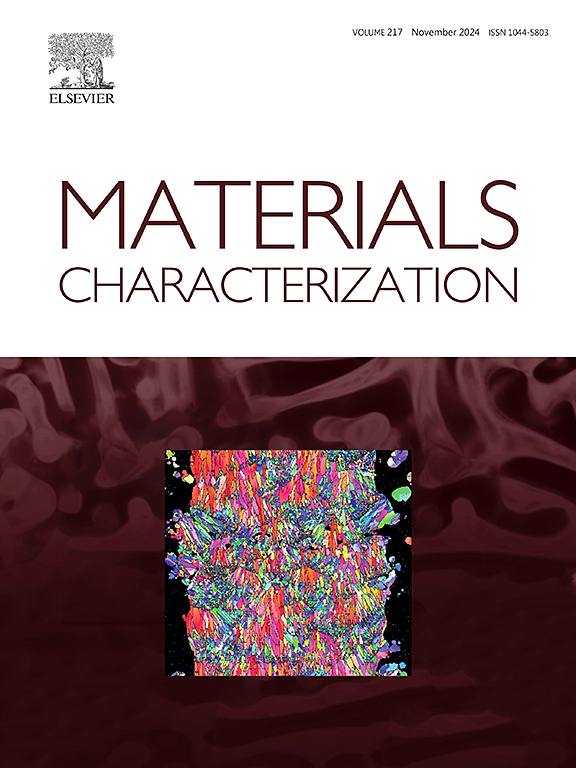Effect of TiB2/2024Al composite filler on the microstructure and mechanical properties of SiCp/2024Al composites welded joint by laser welding
IF 4.8
2区 材料科学
Q1 MATERIALS SCIENCE, CHARACTERIZATION & TESTING
引用次数: 0
Abstract
The laser welding quality of SiC-reinforced aluminum matrix composites (SiCp/Al) is constrained by the formation of Al4C3 phase resulting from the interfacial reactions, which inhibits the applications in aerospace, marine, and automotive industries. The surface forming, microstructure evolution, and mechanical properties of SiCp/2024Al joints with the different thicknesses of TiB2/2024Al filler (0–1 mm) were analyzed in this work. The results indicate that the addition of TiB2/2024Al filler reduces the welding defects such as porosity. Due to the higher affinity between Ti and C atoms, the blocky TiC precipitates in the weld zone (WZ), replacing the Al4C3 phase. As a result, the tensile strength of SiCp/2024Al joints firstly increases and then decreases with the increased thickness of TiB2/2024Al filler. Compared with the traditional SiCp/2024Al joints without filler, the SiCp/2024Al joints with 0.7 mm filler increase to the maximum value, about 268 MPa and 73 % of SiCp/2024Al base material (BM). The addition of TiB2/2024Al filler significantly enhanced the mechanical properties of the welded joints.
TiB2/2024Al复合填料对SiCp/2024Al复合材料激光焊接接头组织和力学性能的影响
sic增强铝基复合材料(SiCp/Al)的激光焊接质量受到界面反应产生的Al4C3相的限制,这限制了其在航空航天、船舶和汽车工业中的应用。研究了不同厚度TiB2/2024Al填料(0 ~ 1 mm)对SiCp/2024Al接头表面形成、组织演变及力学性能的影响。结果表明,TiB2/2024Al钎料的加入减少了气孔等焊接缺陷。由于Ti和C原子之间的亲和力较高,块状TiC在焊缝区(WZ)析出,取代了Al4C3相。结果表明,随着TiB2/2024Al钎料厚度的增加,SiCp/2024Al接头的抗拉强度先升高后降低。与未添加填料的传统SiCp/2024Al接头相比,添加0.7 mm填料的SiCp/2024Al接头的应力增大最大,约为268 MPa,比SiCp/2024Al基材(BM)增大73%。TiB2/2024Al钎料的加入显著提高了焊接接头的力学性能。
本文章由计算机程序翻译,如有差异,请以英文原文为准。
求助全文
约1分钟内获得全文
求助全文
来源期刊

Materials Characterization
工程技术-材料科学:表征与测试
CiteScore
7.60
自引率
8.50%
发文量
746
审稿时长
36 days
期刊介绍:
Materials Characterization features original articles and state-of-the-art reviews on theoretical and practical aspects of the structure and behaviour of materials.
The Journal focuses on all characterization techniques, including all forms of microscopy (light, electron, acoustic, etc.,) and analysis (especially microanalysis and surface analytical techniques). Developments in both this wide range of techniques and their application to the quantification of the microstructure of materials are essential facets of the Journal.
The Journal provides the Materials Scientist/Engineer with up-to-date information on many types of materials with an underlying theme of explaining the behavior of materials using novel approaches. Materials covered by the journal include:
Metals & Alloys
Ceramics
Nanomaterials
Biomedical materials
Optical materials
Composites
Natural Materials.
 求助内容:
求助内容: 应助结果提醒方式:
应助结果提醒方式:


